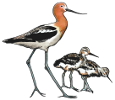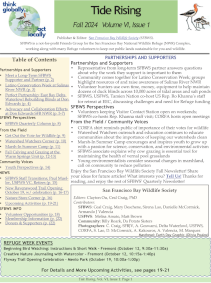Bald eagle chick hatches in Milpitas
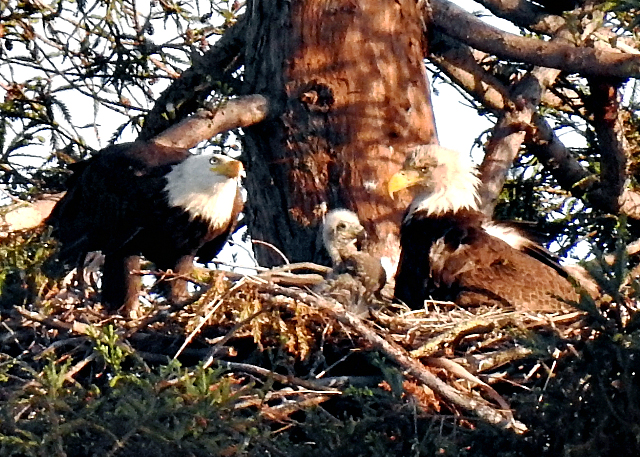
A bald eagle chick inside its nest in the tree tops above Cutner Elementary School in Milpitas. Credit Jyoti Chalpe.
An American bald eagle chick hatched last Monday morning in a nest built in the trees above Cutner Elementary School in Milpitas. The hatching was confirmed by scientists at the Santa Cruz Predatory Bird Research Group. The baby bird's debut has been much anticipated since a pair of bald eagles took up residence near the school campus in late December 2016. The adult eagles have been seen feeding on small water birds in parts of the San Jose-Santa Clara Regional Wastewater Facility and Alviso Salt Ponds that are about a mile away.
Curtner School Principal Jackie Vo-Felbinger told The Mercury News in February, “We’ve had many parents come out and take pictures and some teachers have been taking their students to observe the eagles and their nests. We’ve seen two nests in two separate trees and two eagles are often found sitting together in one of the trees.”
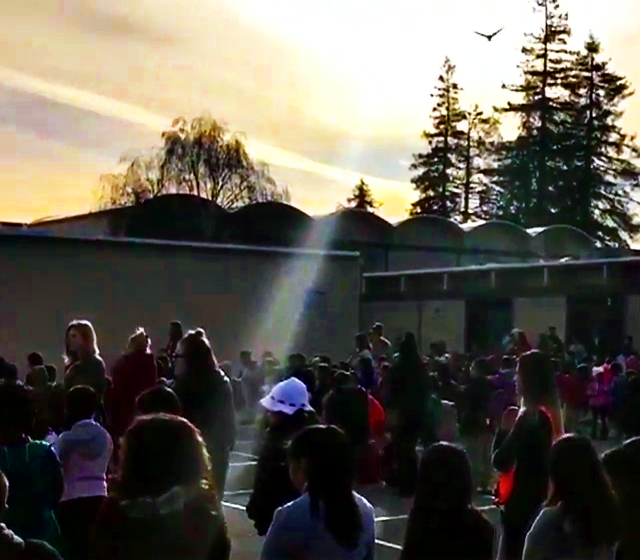
Students and teachers watch the bald eagles nest in the tree tops above Cutner Elementary School in Milpitas. Credit CBS/KPIX.
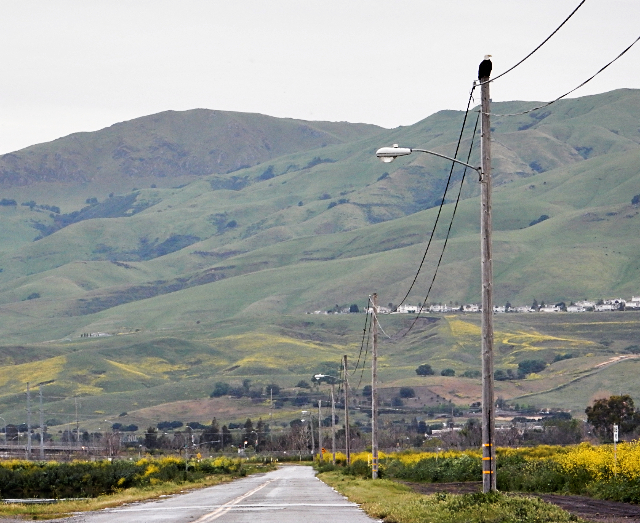
Proud bald eagle parent spotted at the top of a utility pole in April 2017 on the premises of the San Jose-Santa Clara Regional Wastewater Facility. Credit James Ervin.
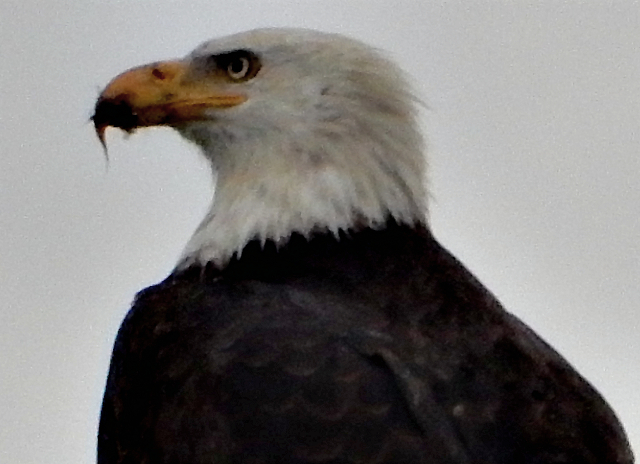
Close proximity to the San Francisco Bay provides bald eagles with plenty of fish and small water birds as prey. Credit James Ervin.

Remains of a dead coot, a small water bird, at the bottom of the utility pole hosting an adult bald eagle. Credit James Ervin.
The hatching of the eaglet signifies a victory for conservationists who have been trying for several years to boost the Bay Area population of bald eagles after it was wiped out in the 1960s by a toxic pesticide called DDT.
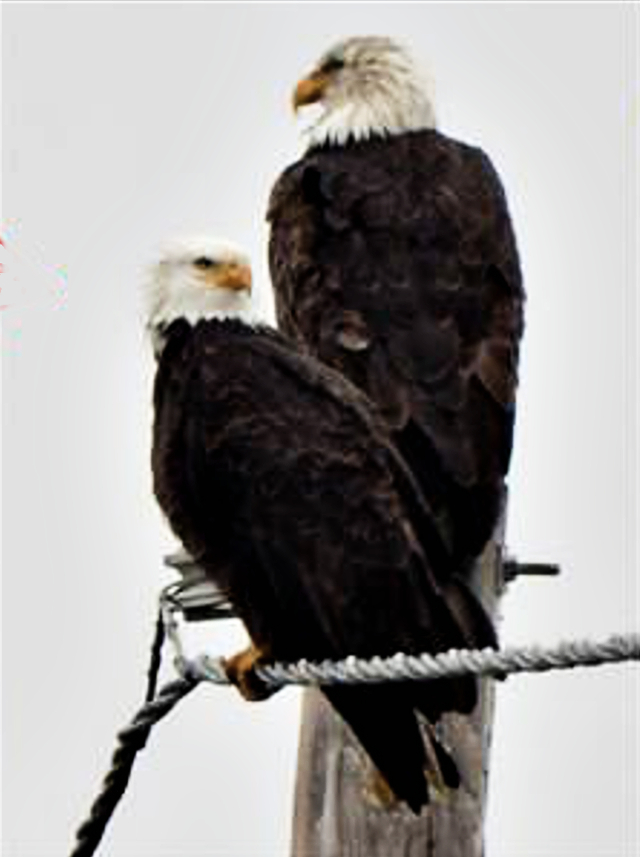
The pair of bald eagles on their honeymoon, spotted in early January 2017 on the premises of the San Jose-Santa Clara Regional Wastewater Facility. Bald eagles mate for life. Credit James Ervin.
When America adopted the bald eagle as the national symbol in 1782, the country may have had as many as 100,000 nesting eagles. By 1963, with only 417 nesting pairs remaining, the species was in danger of extinction. Bald eagles were placed on the Endangered Species List in 1967 and DDT was banned in 1972.
The U.S. Fish and Wildlife Service worked with its partners to accelerate the pace of recovery through captive breeding programs, reintroduction efforts, law enforcement, and nest site protection during the breeding season. By 2007, there were an estimated 9,789 nesting pairs of bald eagles in the contiguous United States and they no longer needed the protection of the Endangered Species Act.
Now, there are about 317 eagle nesting sites around California and 20 actives ones have been identified in the Bay Area, according to Carie Battistone, statewide raptor coordinator at the California Department of Fish and Wildlife.
“Today, Americans can enjoy seeing more bald eagles than at any time in the past 50 years. Populations, nearly extinct in the lower 48 states in the 1960s, now number at least 143,000 individuals,” said Laury Marshall Parramore, a U.S. Fish and Wildlife Service spokesperson.
“We are seeing them where we haven’t seen them in decades,” said Andrew Hughan, a California Department of Fish and Wildlife spokesperson. “For an eagle, Milpitas is 30 seconds from the Bay so there is plenty for it to eat. So if that nesting pair decided they wanted to live (here), there is food, water and shelter and they feel safe, they will build their nest and lay eggs. That’s great!”
Cutner School officials have requested visiting bird enthusiasts to minimize disruption to the campus as well as to the nesting eagles.
